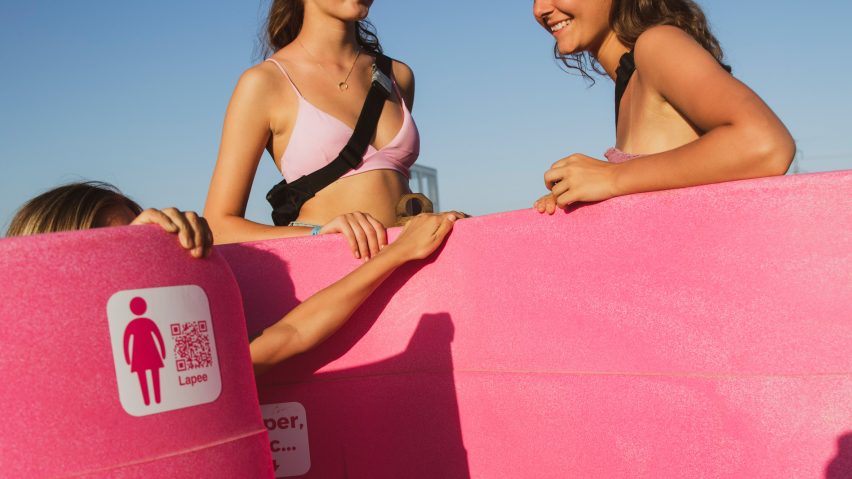
Lapee female urinal designed to reduce festival loo queues
Gina Périer and Alexander Egebjerg have designed an industrial-standard female toilet for festivals and outdoor events that allows people to pee sitting down quickly and safely.
Named Lapee, the pink plastic structure has three urinals arranged in a spiral, with curving back rests that provide privacy while allowing the user to remain aware of their surroundings.
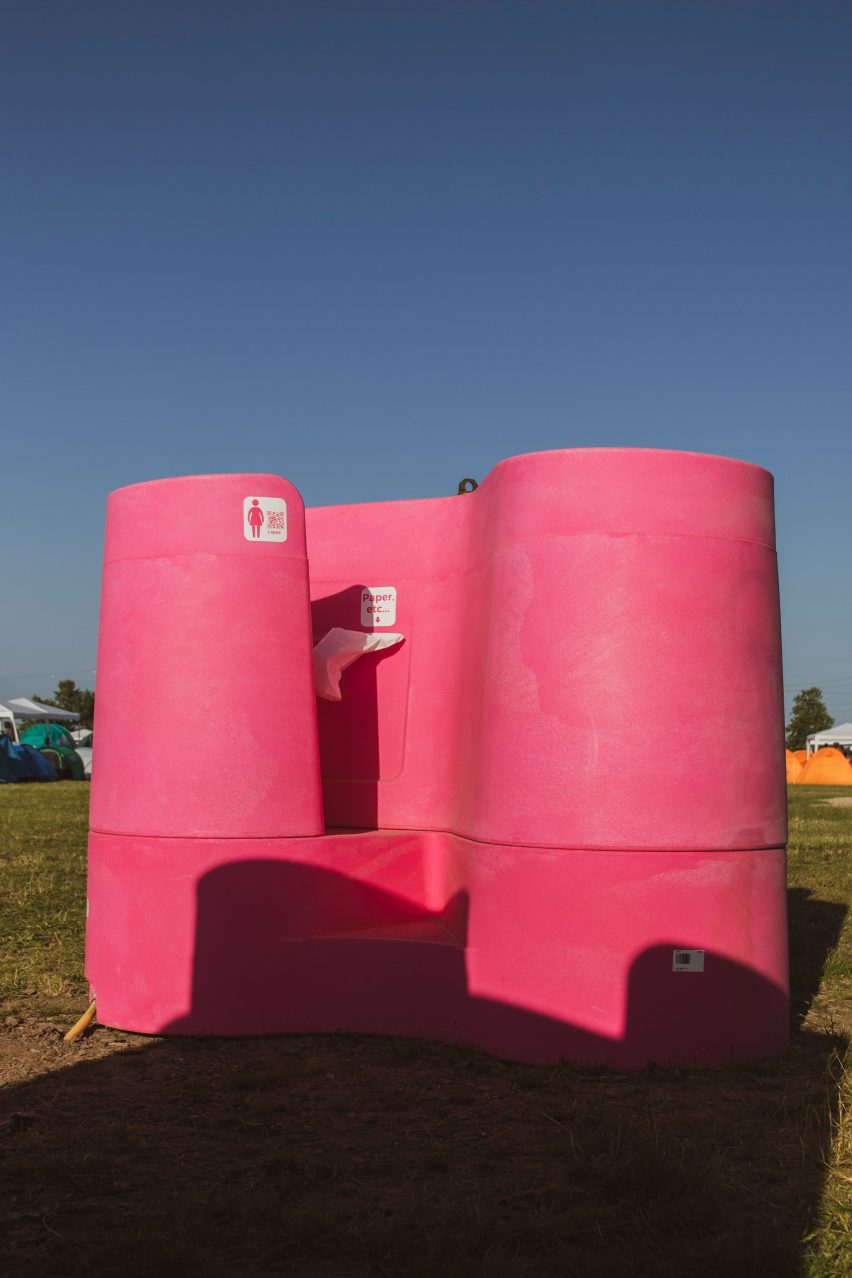
Périer and Egebjerg designed Lapee to create more gender equality at outdoor events, where women are often left queuing for loos with doors while men can use urinals.
Lapee is sturdy, easy to transport and easy to clean.
"We had observed that there had been some tests for women's urinals before, but they were always installations or something put together on site – nothing fully industrialised, nothing scalable," said Périer, a French architect based in Copenhagen.
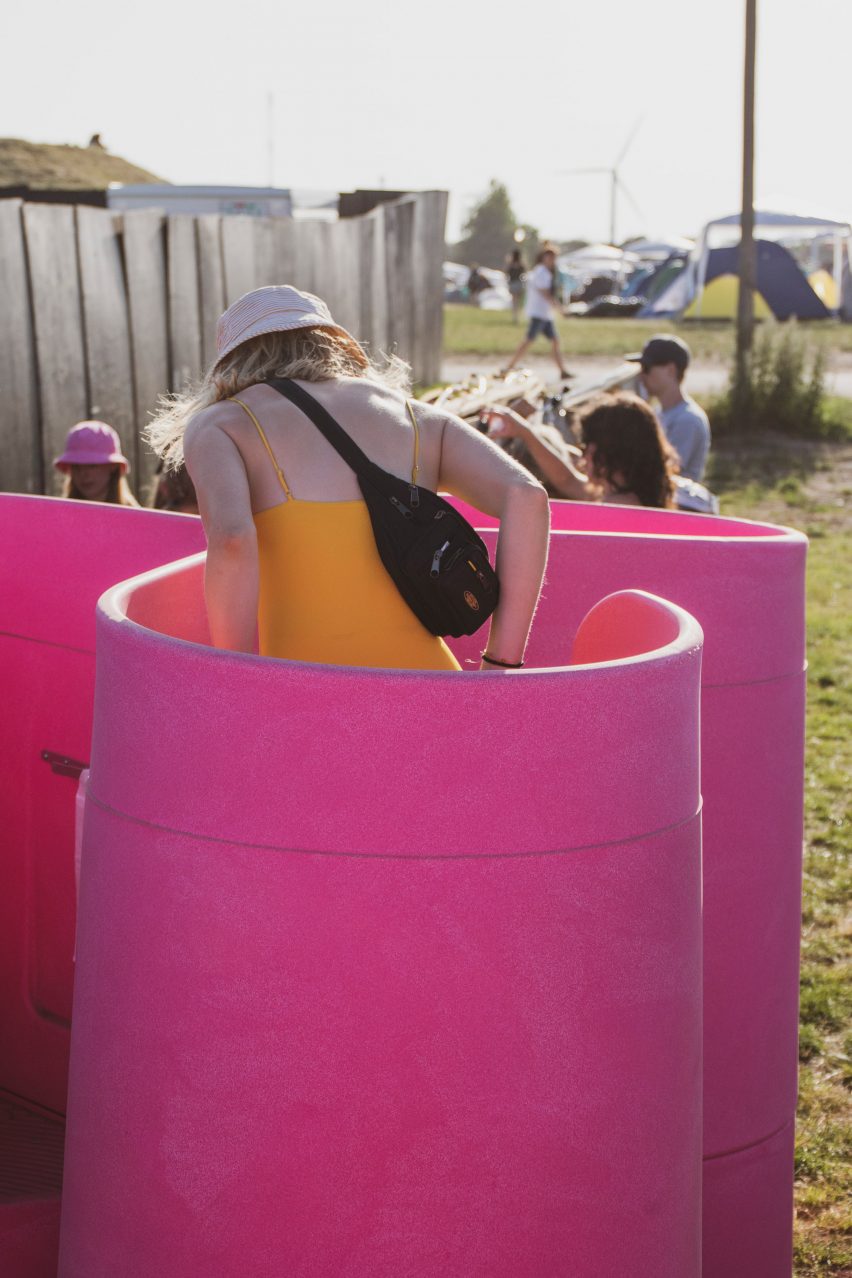
The designers studied the form of male urinals to create a solution for people who need to sit down to urinate – a position that leaves people more vulnerable.
"Guys have to be covered only from the front and the female has to be covered from front and back," Périer told Dezeen. "Because it's a urinal to be intimate enough for people to pee, but it has to be not too intimate."
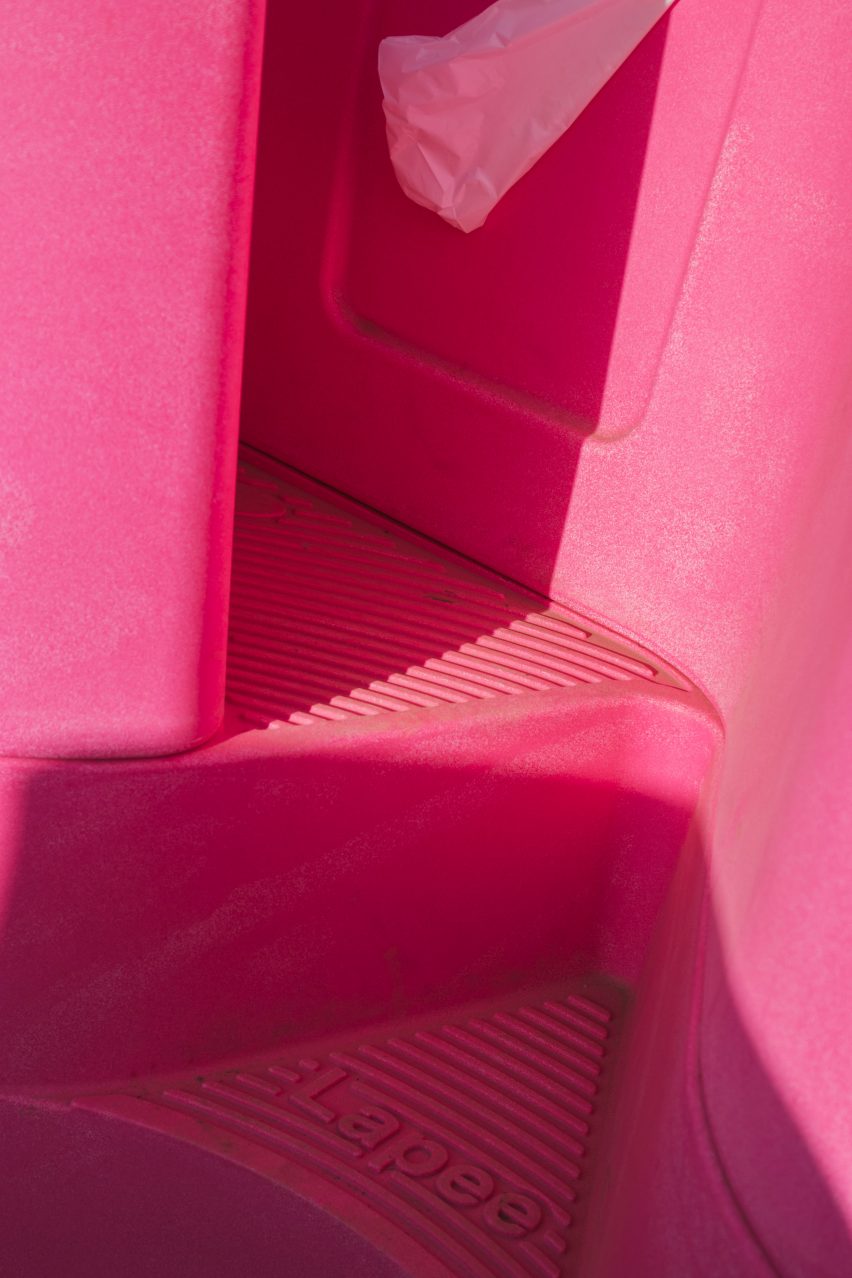
Périer believes that the urinals, which do not having doors, have a raised the seat and walls that are low enough that users can see over without people being able to look in, are safer than standard outdoor toilets.
"You're way more safe than if you're behind a door which is locked and no one can see," she explained.
"You're also 60 centimetres above the ground. We did that so we don't have these vulnerable feeling of squatting down – you are eye level is at the same height as someone standing."
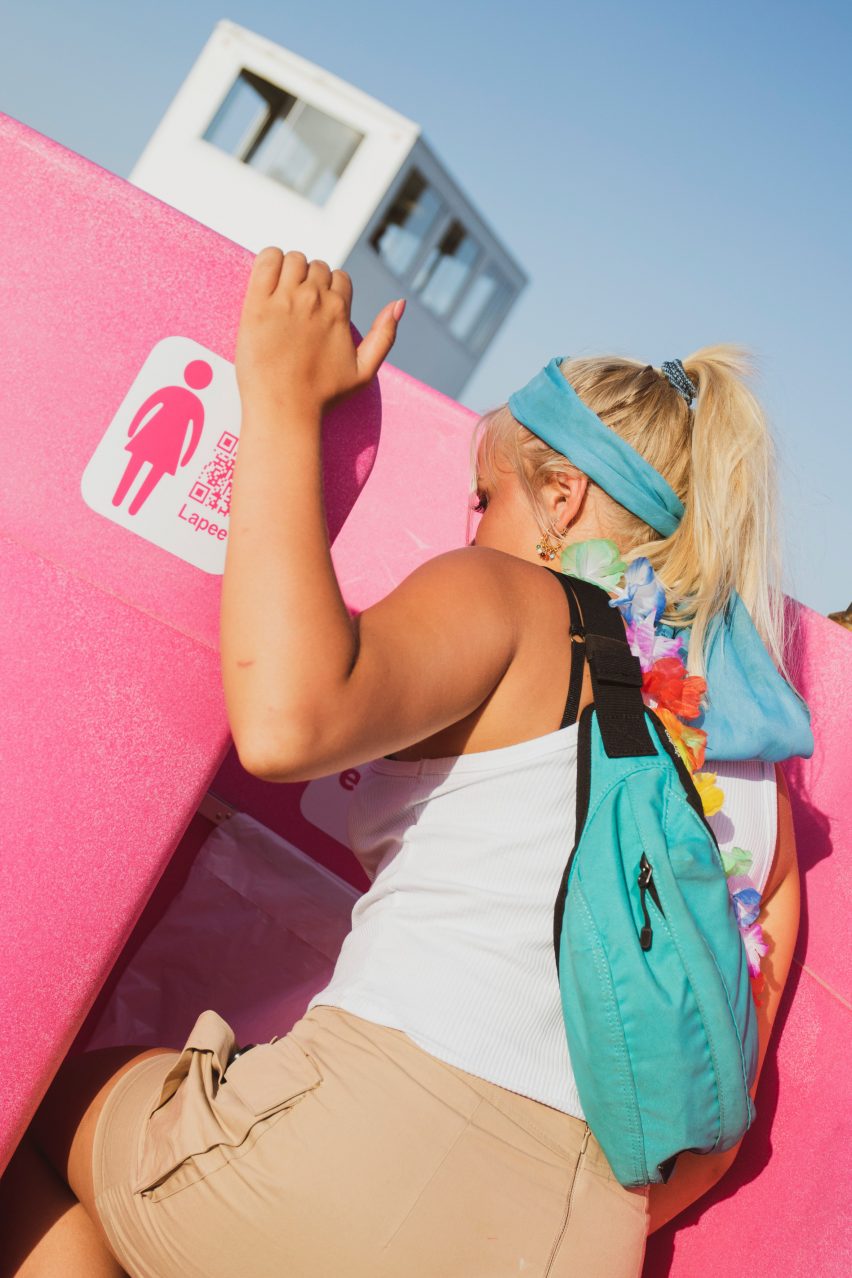
Lapee can hook up to an existing sewage system if its available, but it also has its own 1,100 litre tank so it can stand alone and collect liquid waste for processing.
"We are finding partners right now to do something with the pee so it gets into recycled into fertiliser," said Périer.
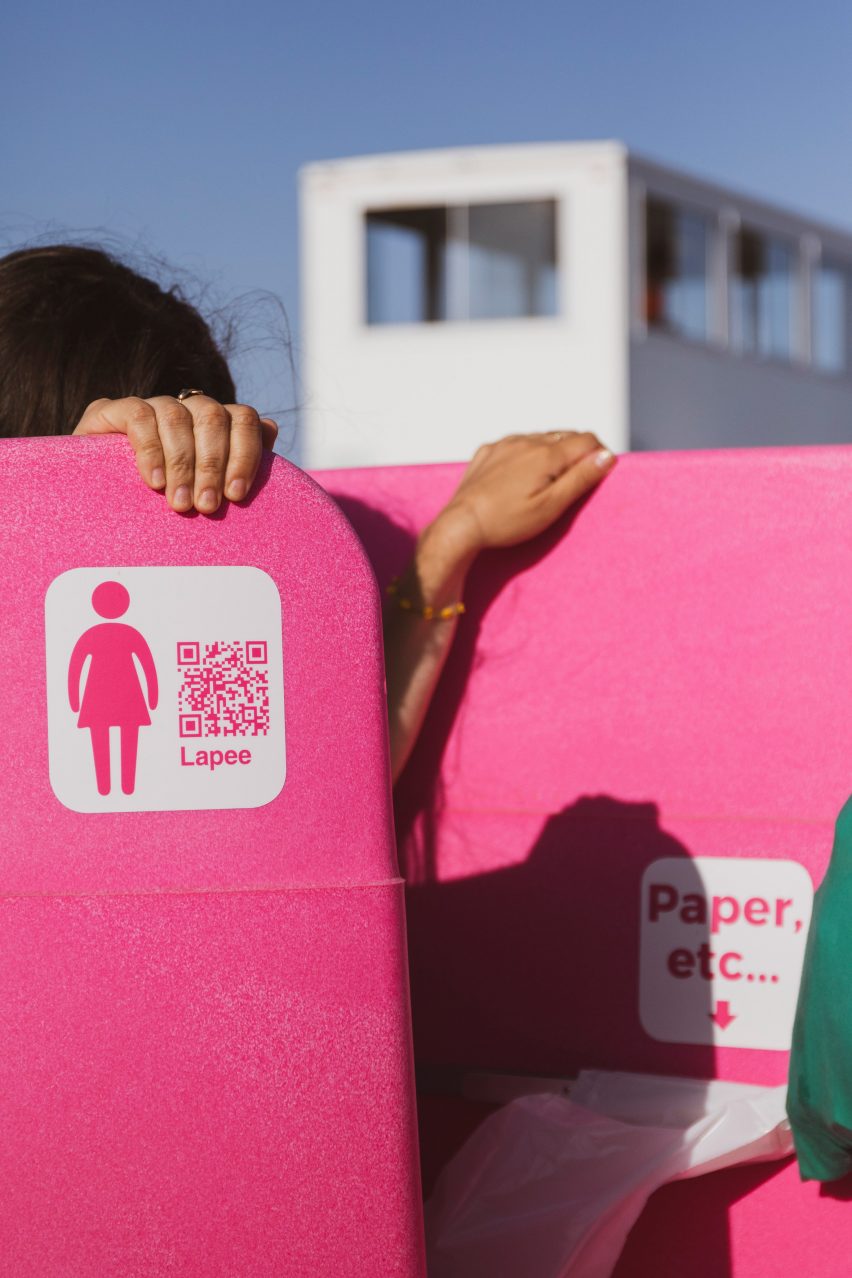
With the tank removed, Lapees can be stacked, making them easy to transport on the back of a truck.
Weighing 200 kilograms when empty, Lapee is made from recyclable polyethylene, a hardwaring plastic that means it can be hosed down for cleaning and withstand the knocks of an outdoor event.
"From an environmental perspective it was important to make a durable product, one that won't be broken in one season. This can last decades," said Périer.
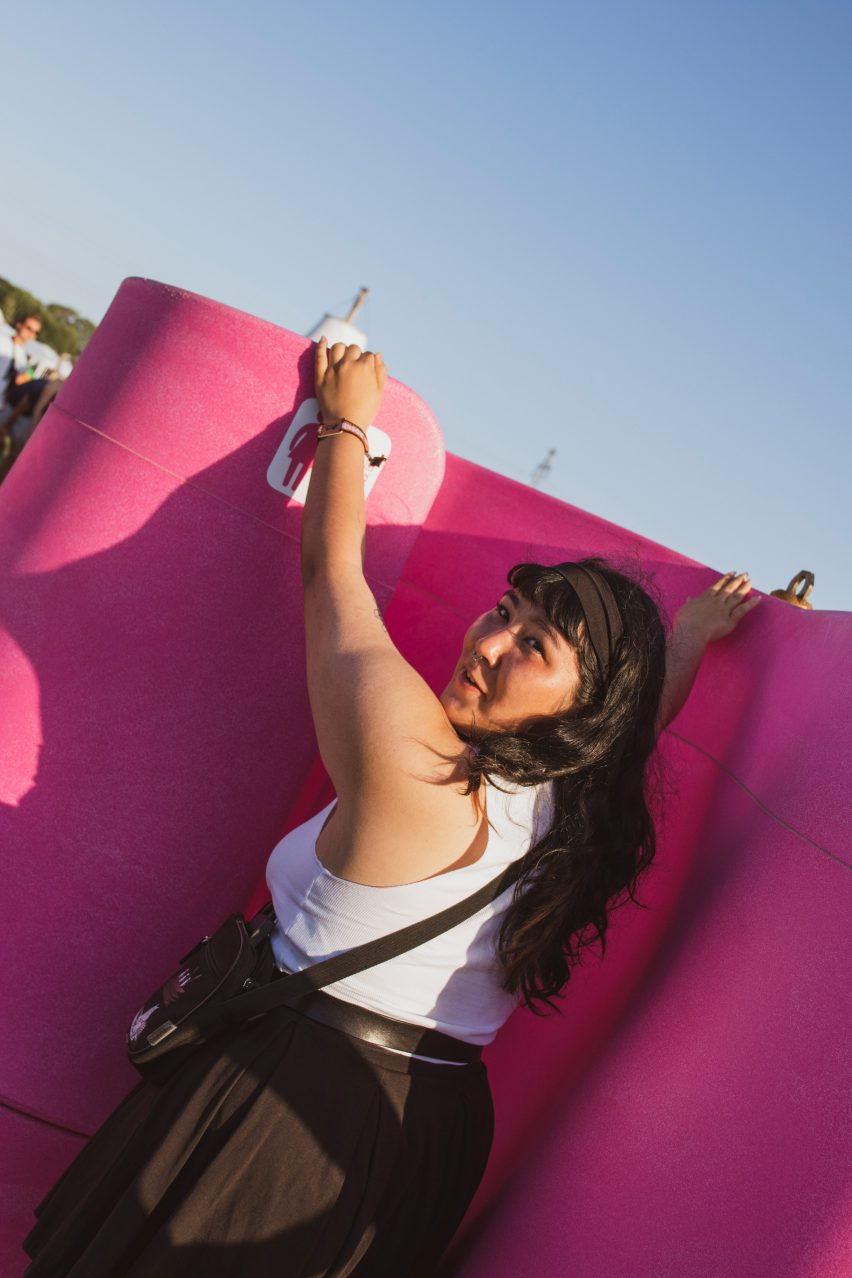
Lapee was trialled at the 2019 Roskilde Festival, a music festival in Denmark attended by 130,000 revellers.
Périer and Egebjerg hope this design could also be used in disaster recovery situations or refugee camps, where women are often left vulnerable when accessing toilets.
"It's all about their safety, dignity, and hygiene," said Périer.
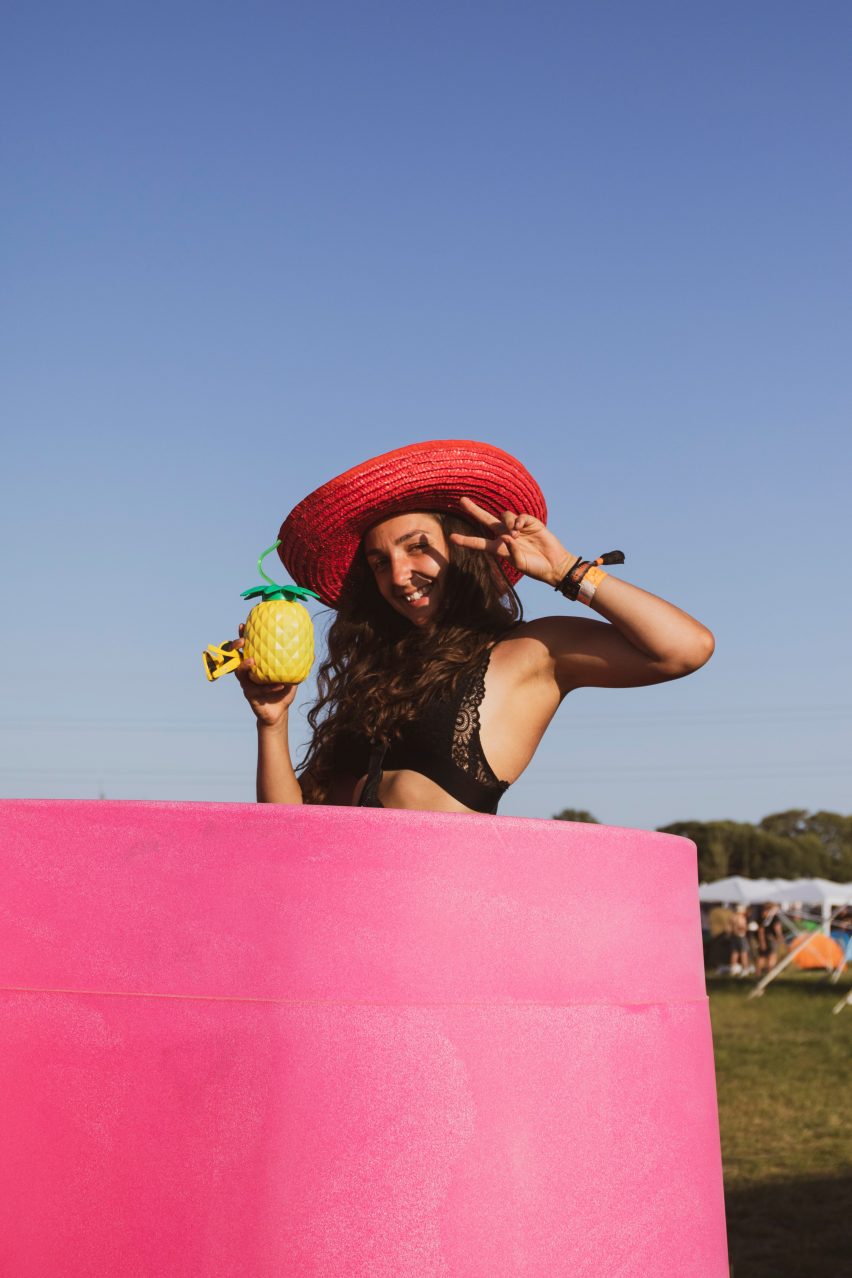
The problem of women needing a safe and convenient place to pee has been tackled by several other designers recently. Elisa Otañez created a bright yellow, mobile toilet that she put in the streets as a protest against the lack of facilities for women in The Netherlands, where she found there is only one public toilet for every 10 male urinals.
Anna Meddaugh designed NightLoo, a reusable toilet in a box for women in refugee camps to use at night in their tents and dispose of in the morning.
Photography is by Olivia Rohde.